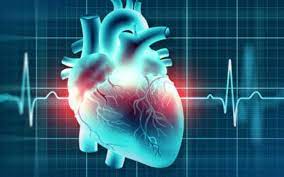22 July 2025 | Tuesday | News

Longeveron Inc. (NASDAQ: LGVN), a clinical stage regenerative medicine biotechnology company developing cellular therapies for life-threatening, rare pediatric, and chronic aging-related conditions, announced that it has licensed an issued US patent (12,168,028 B2) for a stem cell technology from the University of Miami. The composition of matter patent protects unique induced pluripotent derived cardiomyogenic cells that have widespread therapeutic indications for heart diseases. The stem/precursor cells protected by this patent are obtained by deriving cells that bear a cell surface receptor known as the GHRH-Receptor. These cells are uniquely able to differentiate into human cardiac muscle cells and have the potential to be safer than existing strategies to derive new cardiac heart muscle cells.
“With the significant clinical and regulatory progress we have made in hypoplastic left heart syndrome (HLHS) and Alzheimer’s disease, and our recent IND approval for pediatric dilated cardiomyopathy, the opportunity to license this important and complimentary stem cell technology provides us a unique opportunity to expand our stem cell therapy pipeline,” said Joshua Hare, M.D., Co-founder, Chief Science Officer, and Chairman at Longeveron. “This technology provides a solution to one of the most difficult barriers to the implementation of induced pluripotent stem cells (iPS) technology in the cardiovascular space.”
Developing cardiomyocytes from iPS cells was initially pursued as a potential way to repopulate the myocardium, representing a technology capable of generating an unlimited source of cardiomyocytes and/or cardiac precursors, circumventing ethical dilemmas of using embryonic stem cells, and available from any individual donor. This technology, however, was quickly appreciated to have a substantial side effect, that of causing malignant ventricular arrhythmias after engraftment into mammalian myocardium, and this complication has dramatically slowed the pace of entry into the clinic.
The technology of selecting the fraction of GHRHR+ from cardiomyogenic cells circumvents the complication by selecting for cells destined to become only cardiomyocytes and eliminating cells with electrical automaticity, a property found in conduction tissue cells. In so doing, the technology allows for selection for cells that will engraft, contribute new contractile tissue, but will not cause malignant ventricular arrhythmias.
Longeveron believes this technology may be applicable in a broad range of cardiovascular diseases in adults, as well as rare pediatric diseases.
© 2025 Biopharma Boardroom. All Rights Reserved.